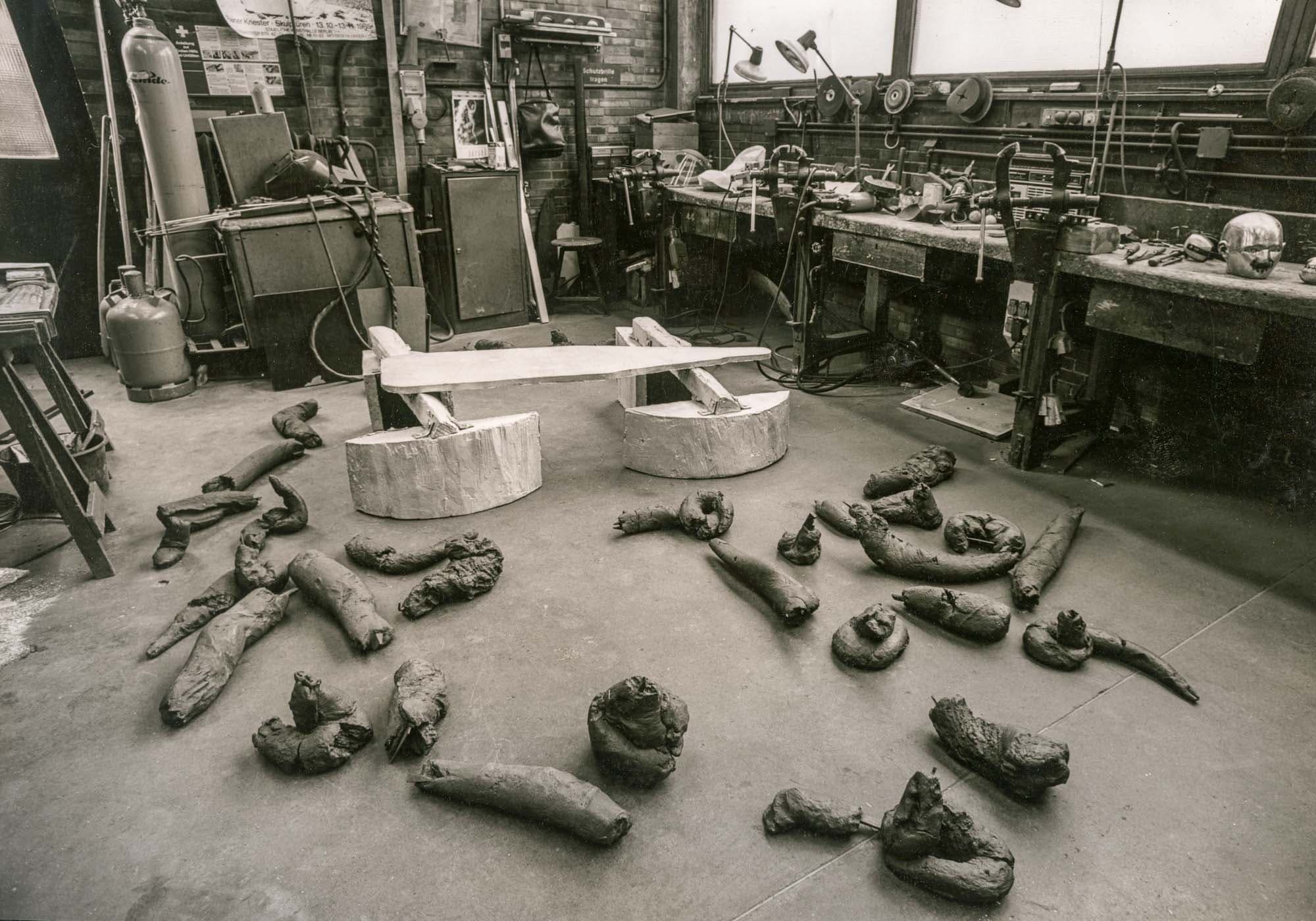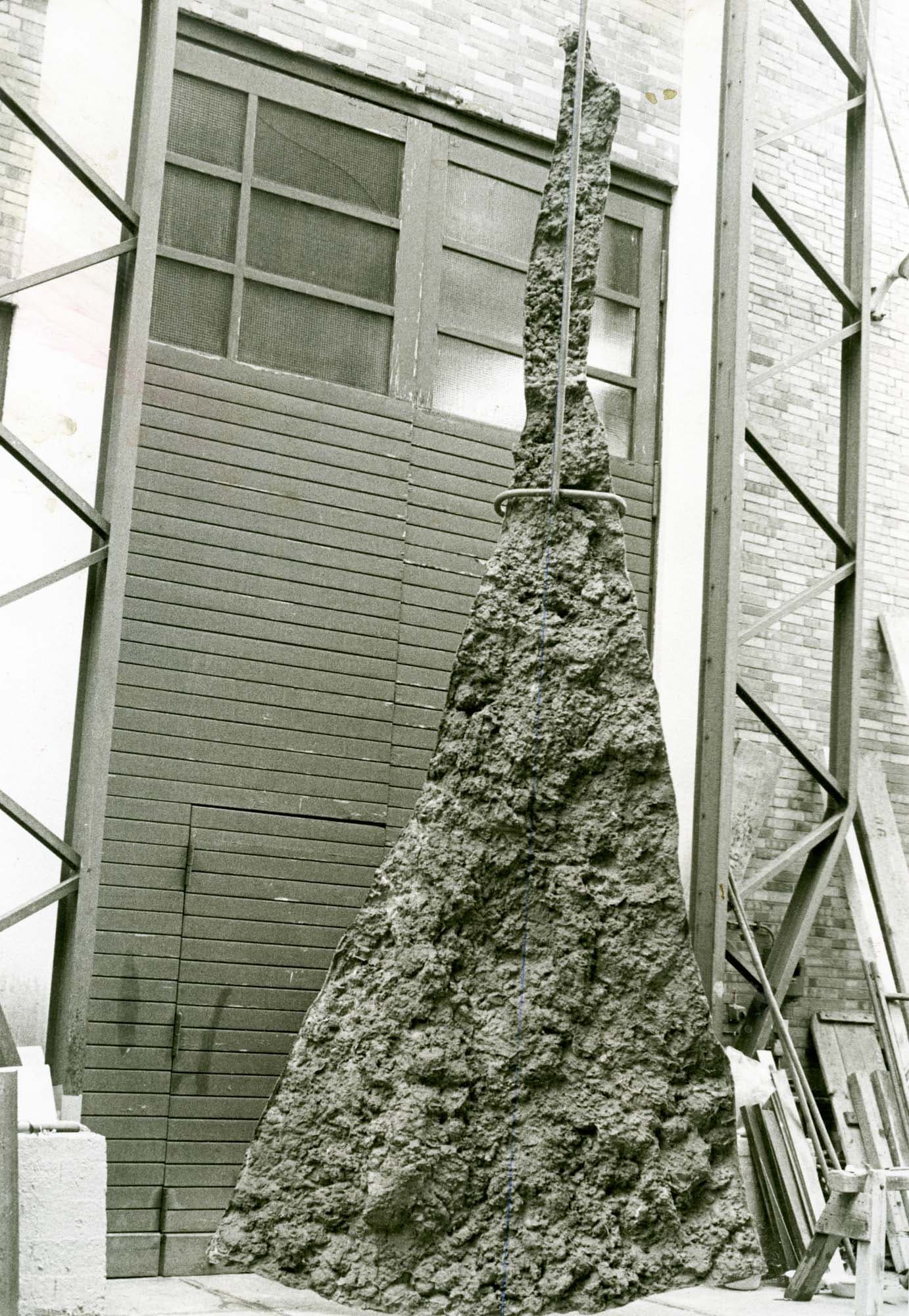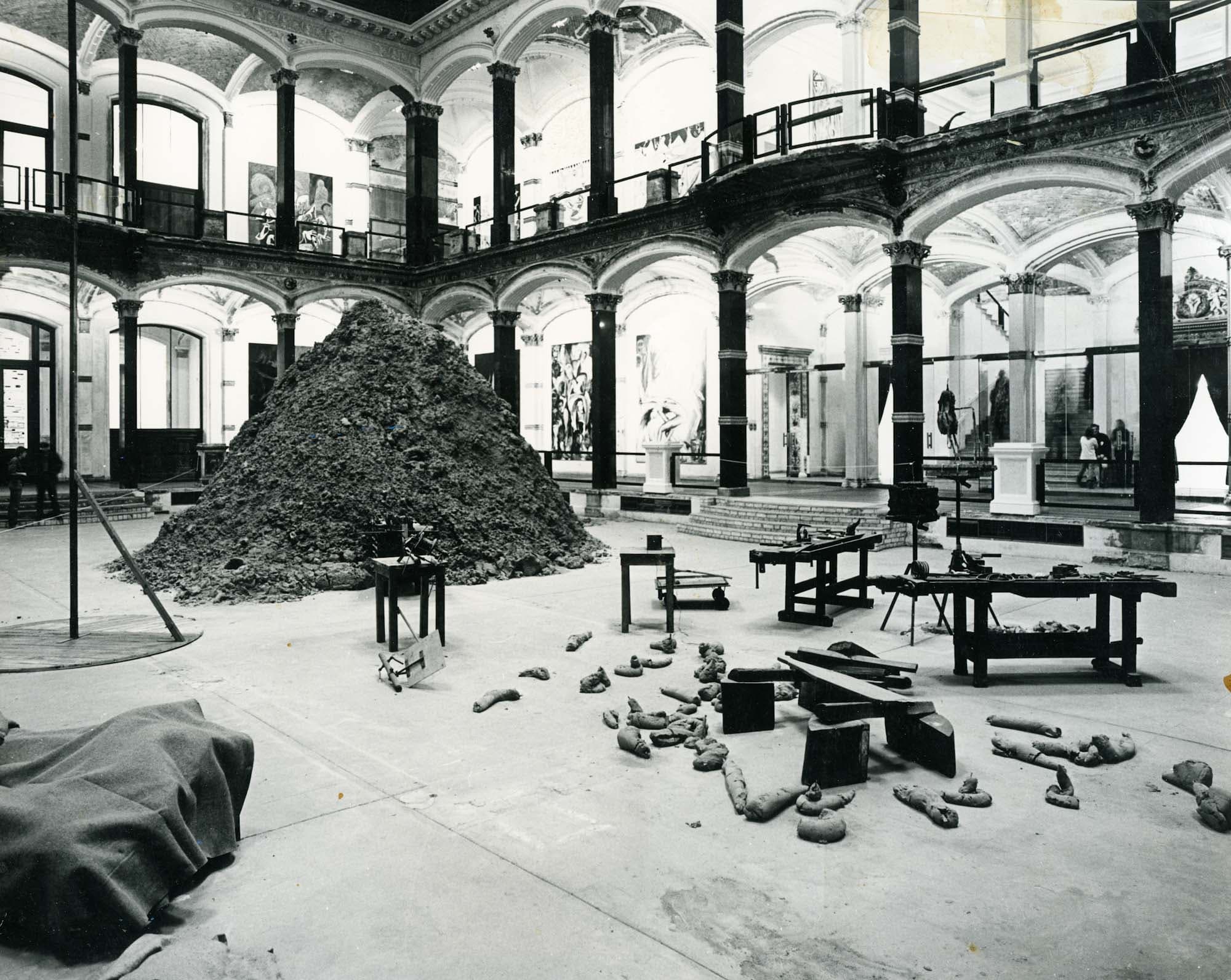In 1982, the Martin-Gropius-Bau was still scarred by the war forty years earlier - but the exhibition taking place there was all the more contemporary: "Zeitgeist" was its title, a who's who of the international art scene at the time. Joseph Beuys is particularly prominently represented. His environment "Hirschdenkmäler (± Wurst-Lehm-Werkstatt)" fills the entire atrium of the Gropius Bau with all kinds of tools and implements, a kind of camp bed and, above all, a huge pile of clay, heaped up to a height of over six metres.
And it did indeed become a workshop, because Beuys came to work: He talked to the visitors and developed the idea of arranging parts of the group into a new work and having them cast. This led to a collaboration with the Noack foundry from 1983 to 1985, during which the "Blitzschlag mit Lichtschein auf Hirsch" was created and produced in five copies.
Ein Blitz aus Lehm in Bronze (A flash of clay in bronze)
The centrepiece of the group is the "Blitzschlag" (lightning strike): a six-metre-high bronze cast of part of the very clay mountain that visitors to the "Hirschdenkmäler" were able to see in the atrium in 1982. It had to be realised in more than ten individual segments using the wax casting process and then welded together, with the seams remaining visible in places. The decisive factor was that the raw appearance and texture of the clay had to be preserved in order to achieve the material-semantic condensation of an "earthy" flash in bronze. To achieve this, the complex, porous-grained structure of the clay had to be meticulously reworked by Noack's chisellers using special punches.
The so-called "Lehmlingen", a group of 35 sausage-shaped "primordial animals" made of clay earth, which were grouped around the "Hirsch" and in which broken tools indicated heads, were all the more raw. When Beuys saw the blanks of the cast "animals", he was so enthusiastic that he did not want to have them worked on at all.
The group also includes a "goat", an iron lorry with a cast pickaxe, a "stag" represented by an arrangement of an ironing board, beaters and pieces of oak trunk cast in aluminium, and a sculptor's modelling foot with a block of earth and a compass on it, also in bronze.
Avant-garde and dissolution of boundaries
With its complex symbolism and numerous references to Beuys' lifelong work, the environment was a great success and is regarded as the centrepiece of his late work. For the history of the Noack company, it is also a special example of how great art is created when an artist is closely involved in foundry work and the foundry employees can in turn engage intensively with a work and the artistic vision. They were also able to enjoy the great expertise of Beuys, who in turn expressly thanked the employees in a documentation of the work that was published later.
It is obvious that with Beuys there could be no boundaries between art and craft, as the name Beuys stands precisely for a radical dissolution of the boundaries between the ideas of art and artist, as a field of action and role available to every individual and society as a whole, explicitly also as a possibility for political change.



